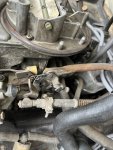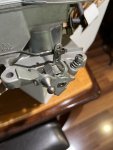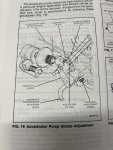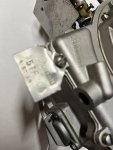The jets that are in the other carb are most likely what you need anyway, even though this engine is smaller. Don't go by the original jet size in the original computer carb, they are way oversize. That's how they controlled the fueling, by adding air with a bypass solenoid.
The china carb I bought was for a v8, and it runs fine. The biggest difference is the original carbs for the 2.8 where I believe a 1.08 venturi. Those smaller carbs like everything else 2.8 in the 1970's are hard to find. The smallest China carb I could find was a 1.21 venturi. Like I said it runs fine, but I can tell a difference at lower rpms. my throttle response is not there and it lugs a little bit. So I have to downshift sooner that I would expect. Most people would not notice it. If I had a 1.08 venturi carb it would have more low rpm grunt than it does.
But as far as jetting, it's fine with the stock jets that China put in it. I actually got 5 more mpg with the China carb than I did with the original computer carb disconnected. I ran the disconnected computer carb with the duraspark conversion for a year and it ran fine, but I noticed my fuel mileage wasn't the greatest.
I think you can look on the side of the carb somewhere and the venturi size will be stamped on it. You can do a google search on 2100 and 2150 carbs and get a lot of info on them. Try to get the smallest one you can.


















